Learning your kalimba’s musical scale is very important to understanding your kalimba and the music it can make. The scale is like a magic key that will open many doors. But what if I told you that your kalimba, just as it is, plays several different scales?
Each scale is like a universe of musical possibilities. We have ten tips for you about how to use four different scales, on the 17-Note in C, in your music. Each of these four scales is like a different land, or a different flavor. If you want this sort of richness in your kalimba playing, read on!
The tablature and sound recordings in this tip series, “Little Bits of Music – Playing Scales,” are specifically for the 17-Note kalimba in C, but are generally applicable to several different kalimbas: You can also use this tablature for an Alto kalimba in G, or a Bb Treble kalimba (they are laid out and painted the same way). However the sound recordings will be in a different key. If you have another sort of kalimba, it may require a larger conceptual leap to connect this instruction with your particular kalimba.
These tips show you how to play the C Major, G, D minor, and A minor scales on your 17-Note kalimba, how to use those scales in melodies, and more.
Perhaps the best part is that each tip contains a tiny segment of music. The concept of a tip is conveyed in text and illustrated with a 3- or 4-measure-long bit of tablature, which will fit nicely on your phone or tablet’s screen. And by clicking the tablature or the button below, you can hear what that tiny bit of music sounds like.
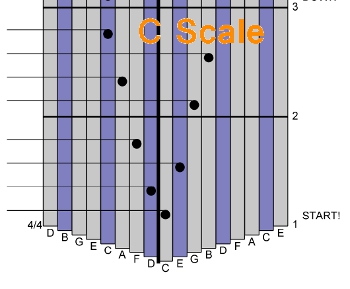 The notes your kalimba plays are probably just like the white notes on the piano. However, the way you play them ends up being totally different from a piano… because the notes are organized differently than on a piano. This tip walks you through the C major scale, and gives you some insight into why scales are so important.Learn the Tip
The notes your kalimba plays are probably just like the white notes on the piano. However, the way you play them ends up being totally different from a piano… because the notes are organized differently than on a piano. This tip walks you through the C major scale, and gives you some insight into why scales are so important.Learn the Tip
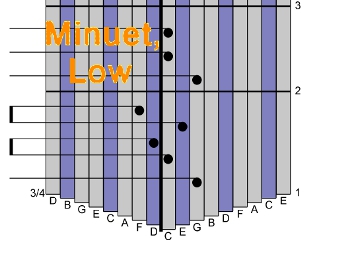 Why learn scales? Because they are useful!. Check out Bach’s “Minuet in G” – ah, but transposed to the C kalimba. If you can play your scales, you have already mastered half the notes.Learn the Tip
Why learn scales? Because they are useful!. Check out Bach’s “Minuet in G” – ah, but transposed to the C kalimba. If you can play your scales, you have already mastered half the notes.Learn the Tip
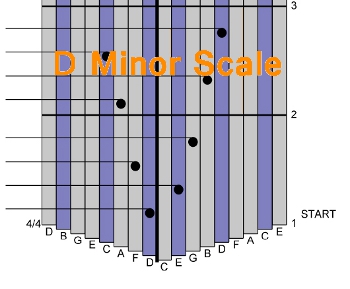
If you start on the middle tine – C – and alternate – right – left – right – left outward and upward and stop 8 notes higher, on the left side’s C, you have just made the C major scale.
Now, instead of starting and ending on C, try starting on the low D just left of the center tine… and alternate your way up the scale, and stop on D. This is a D minor scale.
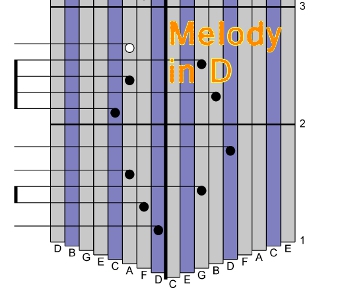 This tip illustrates some music you can play in the D minor mode of your kalimba. Of course, the real lesson is for YOU to create some music in the D minor mode, so pay attention to this music and then try your hand at creating your own.Learn the Tip
This tip illustrates some music you can play in the D minor mode of your kalimba. Of course, the real lesson is for YOU to create some music in the D minor mode, so pay attention to this music and then try your hand at creating your own.Learn the Tip
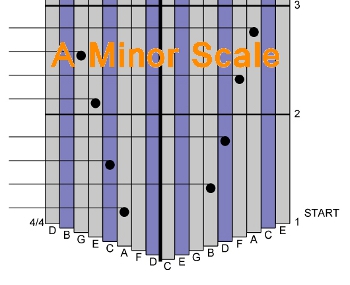
We have played the D minor scale, made by starting on D, and going to E, F, G, A, B, C, and ending on D.
We can get a slightly different minor scale by doing the same procedure, but starting on A, B, C, D, E, F, G, A.
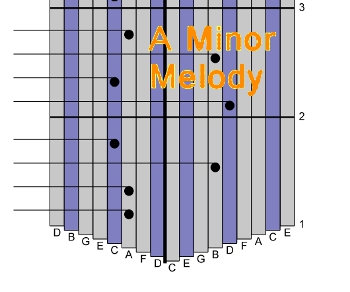
Really, the song lives in the A minor scale. It breathes the air and drinks the water of A minor. It knows the curves and twists of A minor, and it follows them. It is founded on the land of A minor.
OK – I like to be dramatic.
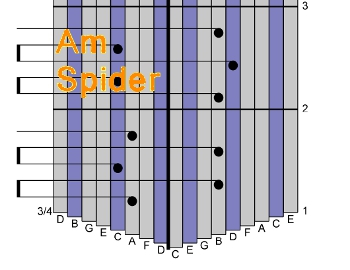
This is a great sort of exercise to help you gain familiarity with your kalimba. Each measure only has three different notes – for example, in the first measure, it goes A B C B A. It even rests a little extra time on that last note, to give you a chance to prepare for the next part.
And the next measure plays the same patter, but one degree higher in the scale.
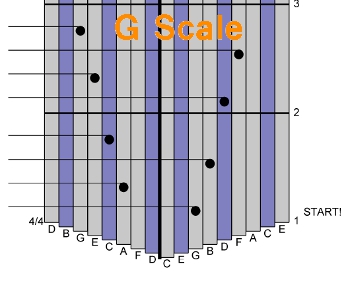
The G major scale usually has an F# in it. However, if you play a G scale – 8 tonally consecutive notes – on a 17-Note Kalimba in C, you will have an F natural, or a flatted 7th in the otherwise major scale.
In music theory terms, this is the G mixolydian mode.
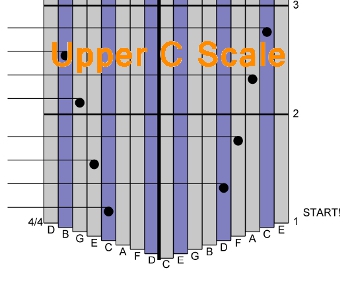
Do the math. You have a 17-Note kalimba. There are 8 notes in one octave of a scale. For the C Major scale, which starts on the very lowest note on your kalimba, you will be able to get a higher octave version of that scale.
And here it is now!
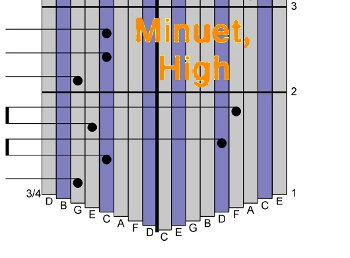
We used the opening melody of the Bach Minuet in G as an example of how scale segments are used in melodies.
Now that we have had a look at the upper octave of the C Major scale, I take you back to the Minuet melody.


Sign up for our newsletter and free resources with your email address:
We pinky promise not to spam you and to only send good stuff.
 Christmas in July 2025
Christmas in July 2025 Patriotic and American Music for Kalimba
Patriotic and American Music for Kalimba